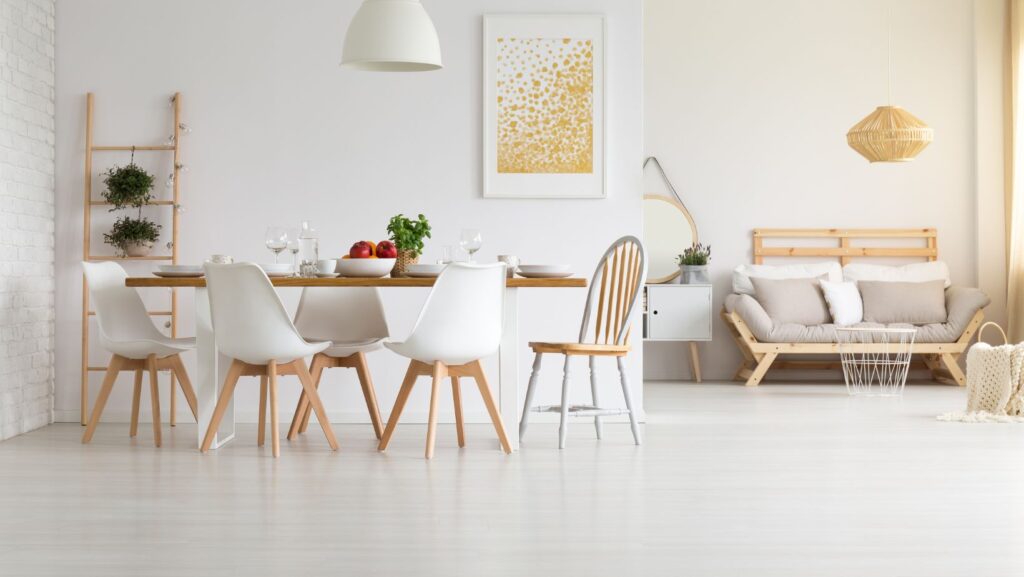In recent years, natural raw materials have become a popular choice for homeowners looking to update their spaces. This trend embraces the beauty and authenticity of materials sourced from nature, offering a timeless appeal that transcends fleeting design fads. From warm, organic textures to eco-friendly benefits, incorporating natural raw materials into your home can enhance its aesthetics and functionality, while also promoting sustainability.
Why Choose Natural Raw Materials?
Timeless Appeal: Natural materials, such as wood, stone, and clay, possess an inherent charm that has stood the test of time. Unlike synthetic alternatives, these materials age gracefully, developing unique textures and patinas over time. The warm, organic feel they bring to a space makes them perfect for creating environments that are both inviting and calming.
Sustainability: One of the major drivers behind the rise of natural raw materials is their eco-friendly nature. Many natural resources are renewable, and their production often has a lower environmental impact compared to synthetic materials. Additionally, opting for local materials reduces the carbon footprint associated with transportation, making this trend both stylish and environmentally responsible.
Versatility: Natural materials blend seamlessly into a variety of design styles, from rustic and traditional to modern and minimalist. Whether you’re updating a country-style kitchen or a contemporary living room, incorporating elements like natural wood flooring or clay tiles can elevate the space while maintaining a cohesive design.

Health Benefits: Choosing natural materials also has health benefits. Unlike some synthetic products that release volatile organic compounds (VOCs) into the air, materials like wood and stone do not off-gas harmful chemicals. This can improve indoor air quality, contributing to a healthier home environment.
Key Natural Materials to Incorporate Into Your Home
Wood is perhaps the most iconic natural material used in interior design. Its versatility is unmatched, as it can be used for everything from flooring and wall panels to furniture and accents. Depending on the species, wood can bring warmth and texture or a sleek, contemporary look to a room. Oak, walnut, and reclaimed wood are particularly popular choices due to their durability and rich, natural grain patterns.
Stone, whether in the form of marble, granite, slate, or limestone, adds a sense of grandeur and solidity to any space. It’s ideal for flooring, countertops, and fireplace surrounds, offering both durability and a luxurious feel. For a more rustic look, real stone flooring can be used in bathrooms and kitchens to create a sense of old-world charm.
Clay-based materials such as terracotta are gaining popularity for their earthy hues and ability to add texture to spaces. Used primarily in tiles, pottery, and decorative accents, terracotta introduces warmth and a handcrafted feel to interiors. It’s an excellent material for creating a Mediterranean or southwestern aesthetic.
Bamboo is another eco-friendly material that has risen in popularity due to its sustainability and aesthetic appeal. Bamboo grows quickly, making it a renewable resource. It’s used for flooring, furniture, and even window treatments, providing a modern, clean look with a hint of exoticism.
Cork is an underappreciated material that offers both style and sustainability. It’s an excellent choice for flooring and wall coverings, providing warmth and sound insulation. Cork is not only renewable but also naturally resistant to mould and mildew, making it ideal for damp areas like bathrooms or basements.

Leather, when used sparingly in furniture, adds a touch of luxury and durability. Leather ages beautifully, developing a patina that enhances its look over time. It’s especially suited for accent chairs, sofas, and ottomans.
How to Incorporate Natural Materials Into Your Home Design
Start Small with Accents: If you’re new to the idea of using natural raw materials in your home, start small by incorporating accents like wooden picture frames, bamboo shades, or terracotta planters. These touches can transform a room without overwhelming the space.
Upgrade Key Areas: Kitchens and bathrooms are prime candidates for natural material upgrades. Replacing countertops with stone or installing wooden shelving can instantly elevate these spaces. Stone tiles or wooden floors can also add both beauty and functionality.
Mix and Match: Don’t be afraid to mix different natural materials. For example, pairing a reclaimed wood dining table with stone flooring or a terracotta accent wall can create a harmonious blend of textures and tones that feels cohesive yet dynamic. This approach can even extend to your outdoor areas, where adding features like Sterling Heights swim spas can add a natural landscape design.
Consider Sustainability: When selecting natural materials, look for those that are sustainably sourced. FSC-certified wood, recycled stone, or locally produced clay tiles are excellent choices for the eco-conscious homeowner.
Final Thoughts
Natural raw materials are not just a design trend – they’re a sustainable, stylish, and long-lasting choice for updating your home. Their timeless appeal, versatility, and eco-friendly nature make them perfect for homeowners who want to create beautiful spaces without compromising on durability or environmental responsibility.
